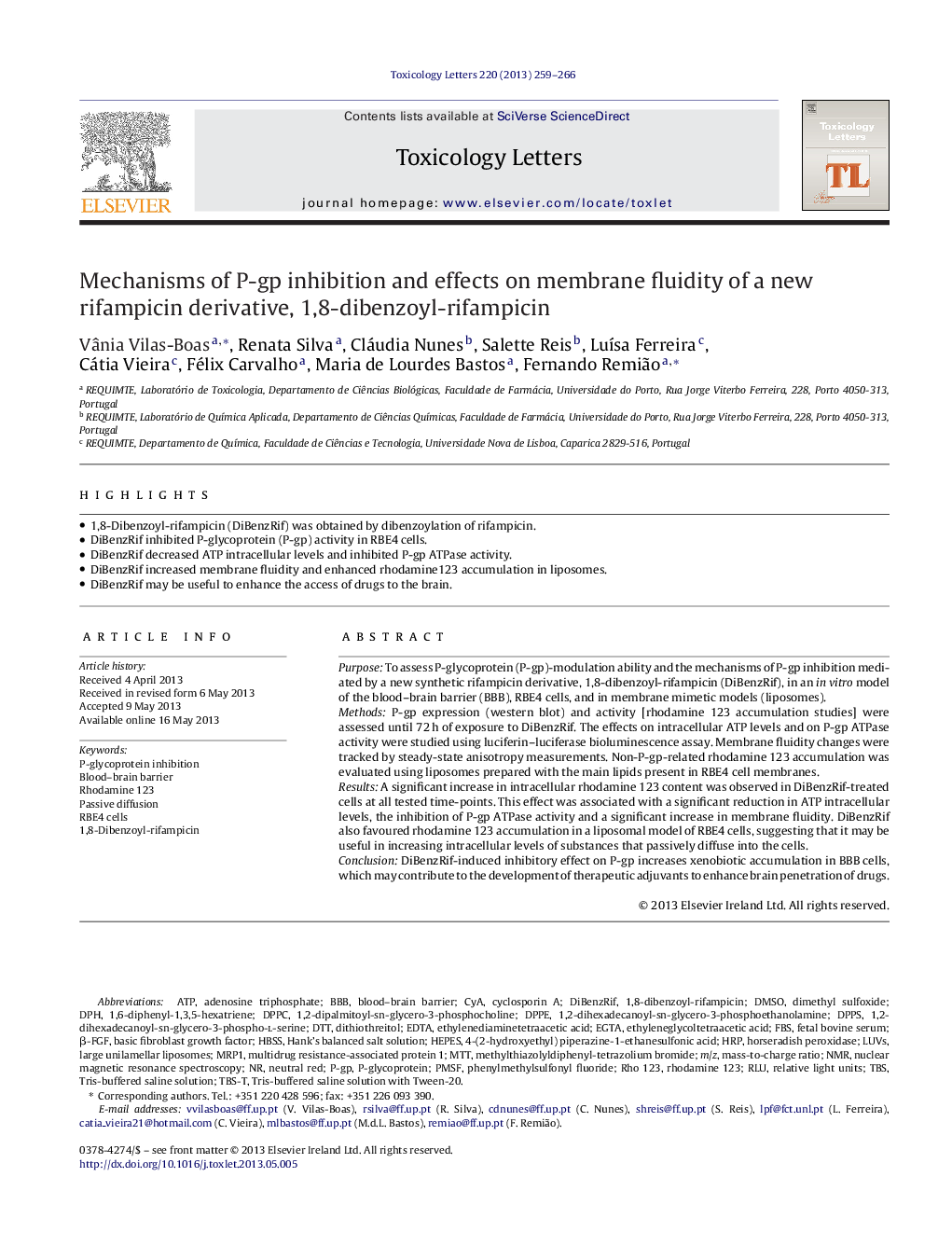| کد مقاله | کد نشریه | سال انتشار | مقاله انگلیسی | نسخه تمام متن |
|---|---|---|---|---|
| 2599358 | 1562634 | 2013 | 8 صفحه PDF | دانلود رایگان |

• 1,8-Dibenzoyl-rifampicin (DiBenzRif) was obtained by dibenzoylation of rifampicin.
• DiBenzRif inhibited P-glycoprotein (P-gp) activity in RBE4 cells.
• DiBenzRif decreased ATP intracellular levels and inhibited P-gp ATPase activity.
• DiBenzRif increased membrane fluidity and enhanced rhodamine123 accumulation in liposomes.
• DiBenzRif may be useful to enhance the access of drugs to the brain.
PurposeTo assess P-glycoprotein (P-gp)-modulation ability and the mechanisms of P-gp inhibition mediated by a new synthetic rifampicin derivative, 1,8-dibenzoyl-rifampicin (DiBenzRif), in an in vitro model of the blood–brain barrier (BBB), RBE4 cells, and in membrane mimetic models (liposomes).MethodsP-gp expression (western blot) and activity [rhodamine 123 accumulation studies] were assessed until 72 h of exposure to DiBenzRif. The effects on intracellular ATP levels and on P-gp ATPase activity were studied using luciferin–luciferase bioluminescence assay. Membrane fluidity changes were tracked by steady-state anisotropy measurements. Non-P-gp-related rhodamine 123 accumulation was evaluated using liposomes prepared with the main lipids present in RBE4 cell membranes.ResultsA significant increase in intracellular rhodamine 123 content was observed in DiBenzRif-treated cells at all tested time-points. This effect was associated with a significant reduction in ATP intracellular levels, the inhibition of P-gp ATPase activity and a significant increase in membrane fluidity. DiBenzRif also favoured rhodamine 123 accumulation in a liposomal model of RBE4 cells, suggesting that it may be useful in increasing intracellular levels of substances that passively diffuse into the cells.ConclusionDiBenzRif-induced inhibitory effect on P-gp increases xenobiotic accumulation in BBB cells, which may contribute to the development of therapeutic adjuvants to enhance brain penetration of drugs.
Journal: Toxicology Letters - Volume 220, Issue 3, 18 July 2013, Pages 259–266